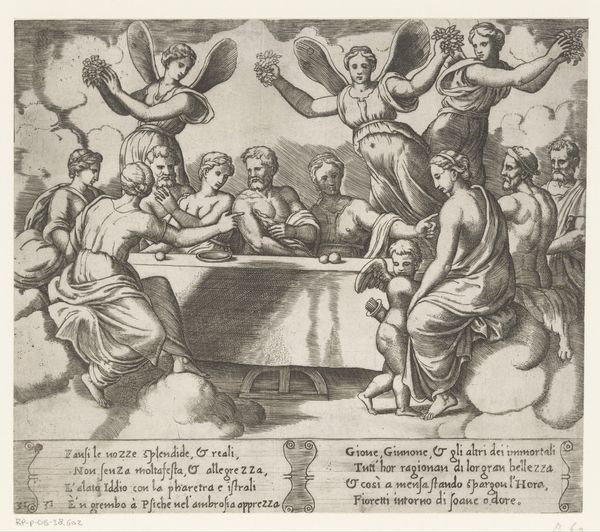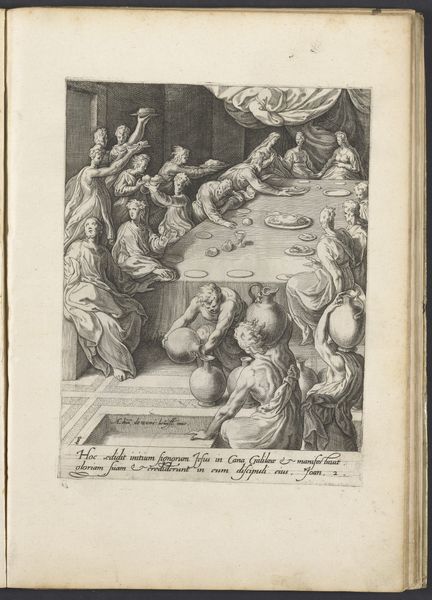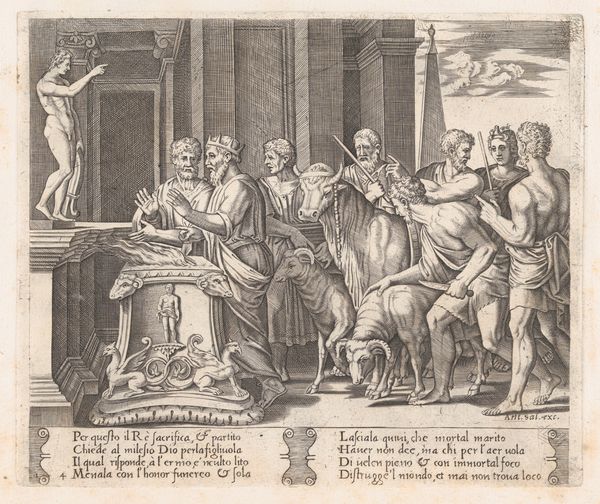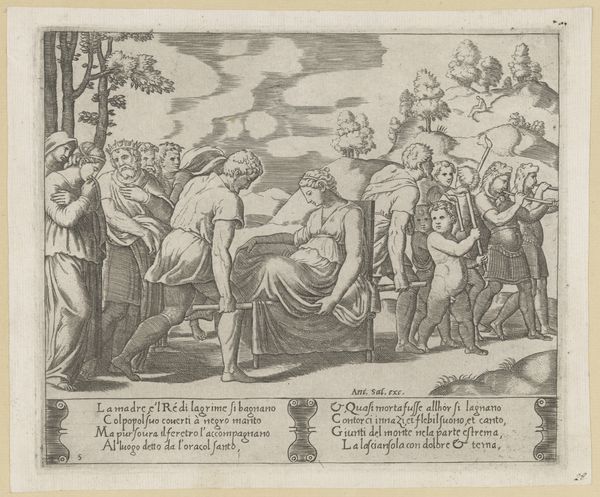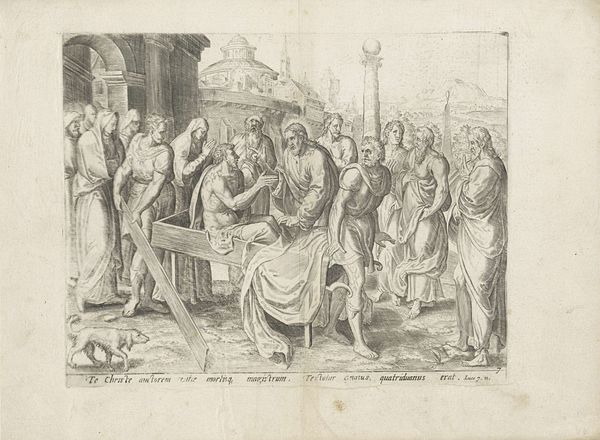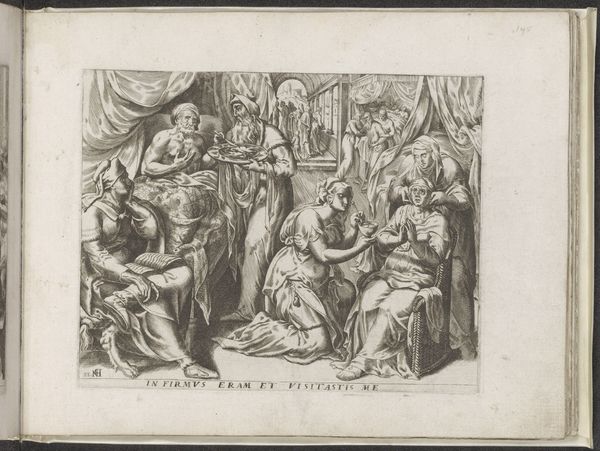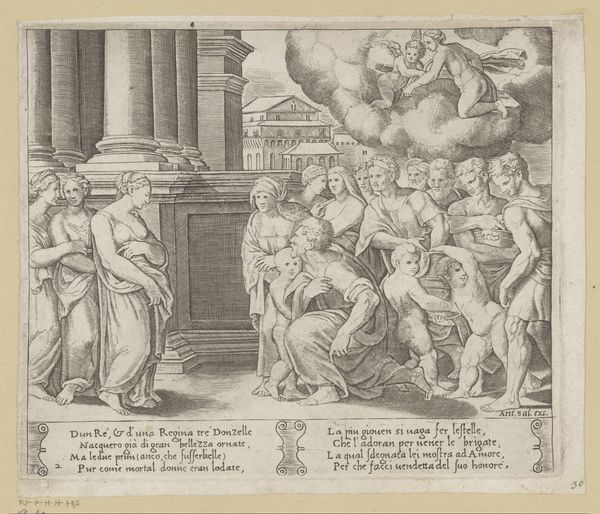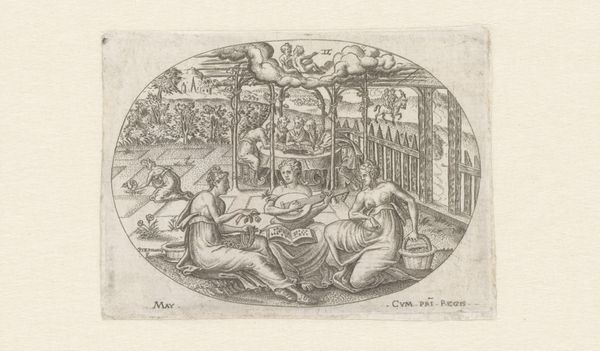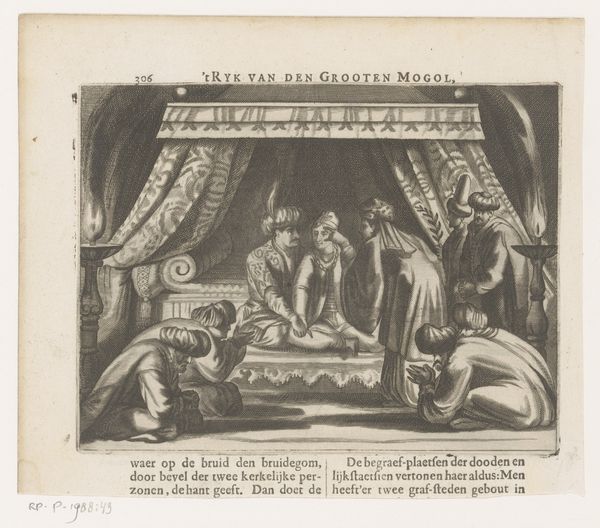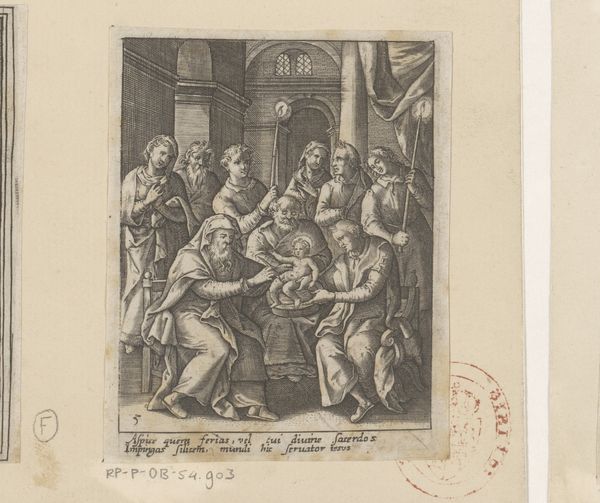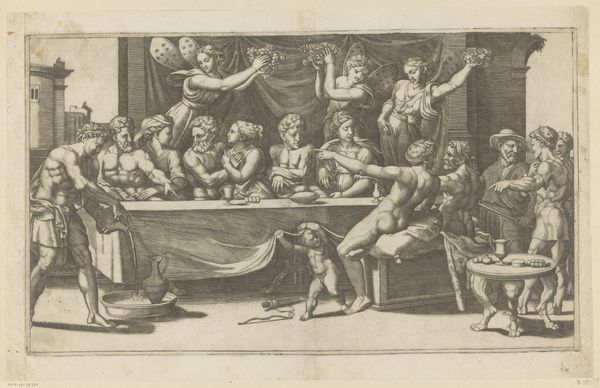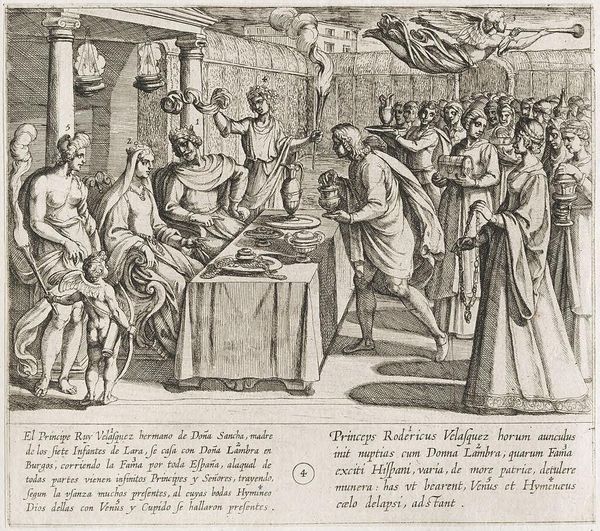
engraving
#
allegory
#
figuration
#
form
#
11_renaissance
#
line
#
history-painting
#
italian-renaissance
#
engraving
Dimensions: height 198 mm, width 233 mm
Copyright: Rijks Museum: Open Domain
Curator: This engraving, "The Wedding of Cupid and Psyche" by the Master of the Die, likely from the mid-16th century, immediately draws my attention to its mode of production. Consider the labor involved in meticulously incising these lines onto the metal plate, a demanding and skilled craft. Editor: It’s interesting to think about it that way. I was just thinking that the composition, with its classical figures arranged almost symmetrically around the table, has such a formal and stately feel. What are your initial impressions? Curator: Beyond the formal aspects, I think it’s vital to investigate the availability and cost of engravings at the time. These prints democratized access to imagery, disseminating classical stories and artistic styles beyond elite circles. Who was purchasing these images and how were they used? Consider the social context; was this simply decoration, or did it serve other functions? Editor: That's fascinating! I hadn't really thought about who the audience might have been or its function, just the classical themes depicted in it. Does the level of detail have any impact on your view? Curator: Absolutely. The dense network of lines and hatching creates form and shadow. It speaks to the engraver's technical skill. But more than that, consider how the material qualities of the ink and paper contribute to the overall experience. How did the materiality affect reception of the work in its time, or ours? Does its current status in a museum impact our reception? Editor: That is a lot to consider. I am beginning to appreciate how looking at art this way, not just as an image but as an object made in a particular time, adds new depths to understanding it. Curator: Precisely. By examining the labor, materials, and social context of this print, we gain a deeper understanding of its cultural significance. It's not just about the mythological scene depicted, but about the means of production and consumption within a specific historical moment. Editor: It makes the work feel so much more alive than just something from the Italian Renaissance. Thanks for sharing that lens!
Comments
No comments
Be the first to comment and join the conversation on the ultimate creative platform.
